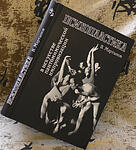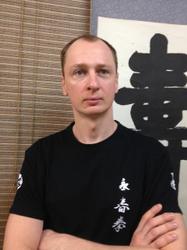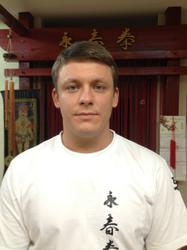Expert’s report on the Wing Chun’ trade name
We wish to inform you that the Wing Chun trademark registration with licence number 191241 HAS BEEN INVALIDATED by the board of appeal by its decision of 05.17.2002. The name Wing Chun’ is not considered to be a trademark and is free to use.
A.A. Maslov
1. In a philological sense, the term Wing Chun is a transliteration of the Southern Chinese (Guangdongese, Cantonese) pronunciation of the term Yun Chun’ in Standard Mandarin (Jyutping). It is reasonable and traditional to use the Southern transcription of the term. The traditional usage of the Southern transcription is standard procedure because this is a place name, which originated in the southern part of China, in the Guangdong Province. There are several Southern pronunciations absorbed by Western languages for the same reason, e.g. the name of the special administrative region of Hong Kong (Jyutping: Syangan), the name of the social democrat Sun Yat-sen (Sun Zhongshan), etc.
The literal translation of Wing Chun is Eternal Spring’, which is an allegorical reference to a long life’ from the classical ancient Chinese work Shi Qing’, or Canon of Poetry’, written at the beginning of 1 B.C.
2. Geographically, Wingchun is the place name of a district in the Fujian Province where the Wing Chun style supposedly originated. Incidentally, the district still exists.
3. Culturally and historically, Wing Chun is one of the major styles of the southern branch of the Chinese martial art Wushu, or Kung Fu. According to legend, the style developed in the Fujian Province in the 17th Century, but it was not mentioned in local chronicles until the 19th Century. These legends speak of Chi Shan, a well-known monk and the Father Superior of the Shaolin Monastery in the Henan Province, as the founder of the style. Chi Shan gave his first basic Wing Chun lessons at the Guangzhou monastery in the southern province of Guangdong.
According to certain legends the Wing Chin style was named after a district in the Fujian Province while others claim it was named after Yim Wing Chun, the female founder and major Master of the discipline.
Besides legend, there are local chronicles like the Fujian Province Chronicles’ (written about mid-19th Century), the Wing Chun District Chronicles’ and many others, which can be used to reconstruct the history of the discipline. A brief history of the style was mentioned in such authoritative publications as Zhongguo Wushu Da Cidian, (the Comprehensive Encyclopedia of the Chinese Wushu). Beijing: National Publishing House of Physical Culture, 1990, page 50.
Today, Wing Chin is popular in the south of China, especially in the Fujian and Guangdong Provinces, Shunde and Gaohe regions. Wing Chun is also one of the most popular methods of Wushu in Hong Kong, where its international organisation headquarters is located.
With its distinctive training system, set of movements and structure of technical actions the Wing Chun style is easy to tell apart from other Wushu styles. The following elements characterise it as a fully-fledged style: an original name, a specific set of movements, a unique training system, an historical heritage and genealogical books of tutors and apprentices as well as a developed teaching school.
The 1960’s and 70’s brought a considerable number of immigrants from southern China and Hong Kong into the West. Because of this, Wing Chun was one of the first styles to enter those markets. A developed training system and large number of immigrants with whom the style is popular has made Wing Chun one of the most widespread styles in the world.
There are approximately a dozen international and over a hundred national and regional organisations developing the Wing Chun style. The largest ones are in Hong Kong, Germany and the USA.
Bruce Lee, who emigrated from Hong Kong to the United States, contributed substantially to the popularisation of Wing Chun by showing his skills in several films and becoming one of the first to teach the style in Seattle, Washington.
During the 1970’s Wing Chun arrived in Russia. Currently there are several dozen organisations and clubs of different scale and level of professionalism in Russia. Some of them are affiliated with international organisations; at the same time none of the organisations worldwide claim a monopoly on the Wing Chun instructions or name.
Therefore, the Wing Chun name, being a place name as well as a generally accepted name of the Wushu style, cannot be monopolised or used exclusively by any organisation.
A. A. Maslov,
Member of the Russian Academy of Medical Sciences, Professor, Vice Head of the General History Department at the Russian University of International Friendship
31.07.2 002.
002.





 Коан – вопрос к членам Федерации Юн Чун Цюань от президента В.В. Мартынова: «Что Вы сделали для Федерации из того, что не мог бы сделать любой другой за деньги?»
Коан – вопрос к членам Федерации Юн Чун Цюань от президента В.В. Мартынова: «Что Вы сделали для Федерации из того, что не мог бы сделать любой другой за деньги?»


